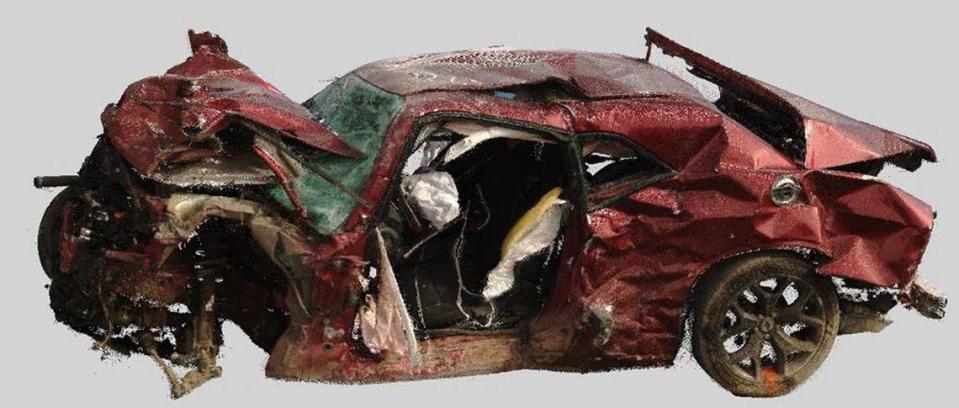California may require anti-speeding devices on cars. That doesn’t make it a nanny state | Opinion
California may have finally found a cure for lead feet.
A bill recently introduced in the state Senate proposes putting the brakes on speeding by requiring car makers to equip vehicles with speed-limiting devices starting in 2027
The technology, called an intelligent speed limiter system, would prevent vehicles from going faster than 10 mph over the posted speed limit.
Emergency vehicles would, of course, be exempt and the CHP commissioner would be authorized to allow the system to be disabled on other vehicles “based on specified criteria.”
The controversial bill SB 961 was proposed by Sen. Scott Wiener — a San Francisco Democrat often reviled by conservatives as a “nanny stater” — and is candy to California haters.
Here’s a sample of comments posted online:
“That’ll be great if you just go to visit ... locals will be easy to pass.”
“Good ol’ Commiefornia is at it again.”
“Ridiculous. Anyone who would support this type of measure should just move to a country with the type of government that will nanny your every move.”
Slowing down the ‘super speeders’
Not so fast.
Is it so wrong to want to prevent drivers from barreling down the freeway at 90 mph, weaving in and out of lanes, putting themselves and others at risk?
Of course not.
This bill as written may not be perfect. For example, legitimate concerns have been raised about the need to exceed the speed limit in emergency situations, though there is a provision in the bill that the device could be “temporarily disabled.”
Also, why 10 mph? Why not 12 or even 15? Granting a little more leeway would likely lower resistance to the idea and increase likelihood of passage, while still targeting super speeders who habitually travel 20 and 30 miles over the speed limit.
Speed-related traffic deaths in SLO County
Speeding continues to claim too many lives, even though cars are safer now than they were even 10 years ago, thanks in large part to evolving technology.
Over a three-year period — 2020, 2021 and 2022 — 12,947 people died in traffic collisions in California, according to data from the California Statewide Integrated Traffic Records System. Of those, 3,498 died in speeding-related crashes and 3,224 died in alcohol-related accidents.
In San Luis Obispo County alone, 84 people died in collisions over the three-year span. Speeding was a factor in 21 of the deaths and alcohol was involved in 20.
Often, there are multiple factors involved in an accident, but speed nearly always makes things worse.
Here’s how the Insurance Institute for Highway Safety explains it: “High speeds make a crash more likely because drivers have less time to react and because it requires a longer distance to stop or slow down. They also make collisions more deadly because modest increases in speed cause large increases in crash energy.”
Not just California
California isn’t alone in considering speed-limiting technology.
Last November, the National Transportation Safety Board recommended “intelligent speed assistance technology” in all cars following a multi-vehicle crash in Las Vegas that killed nine people. The driver at fault flew through a red light at 103 mph, according to the NTSB. The driver had cocaine and phencyclidine in his system, but accident investigators believe that reduced speed could have mitigated the severity of the crash.
“We found that repeat speeding is a nationwide problem, but evidence-based countermeasures targeting repeat speeding offenders are lacking,” the agency wrote in a news release. “Further, inaccurate driver records reduce the likelihood that repeat speeding offenders can be accurately identified.”

Some car manufacturers already offer the technology, which is marketed especially to parents of teenagers.
And Autoweek reports that the European Union already is requiring cars to be equipped with at least one of four speed-limiting technologies: One merely beeps at drivers when they exceed the speed limit; another uses vibrations to let drivers know they’re speeding; and the other two actually slow the car by pushing back against the pressure of the driver’s foot on the accelerator pedal.
Wiener’s bill doesn’t specify the type of system to be used. In an interview with the Los Angeles Times, he said he would be open to either passive technology, such as beeping or buzzing drivers when they speed, or an active system that actually slows the car.
How about both? Give drivers a chance to reduce speed and if they don’t, do it for them.
That’s not government overreach. Like seat belts, infant car seats and back-up cameras, speed-limiting technology is another in a long line of common sense safety measures.
Wiener’s proposal won’t change things overnight. The majority of cars on the road would not be equipped with the technology.
And who knows? By the time most older-model cars are off the road, self-driving cars may have taken over.
In the meantime, though, it would be foolish to ignore technology that can make the roads safer or us all.

